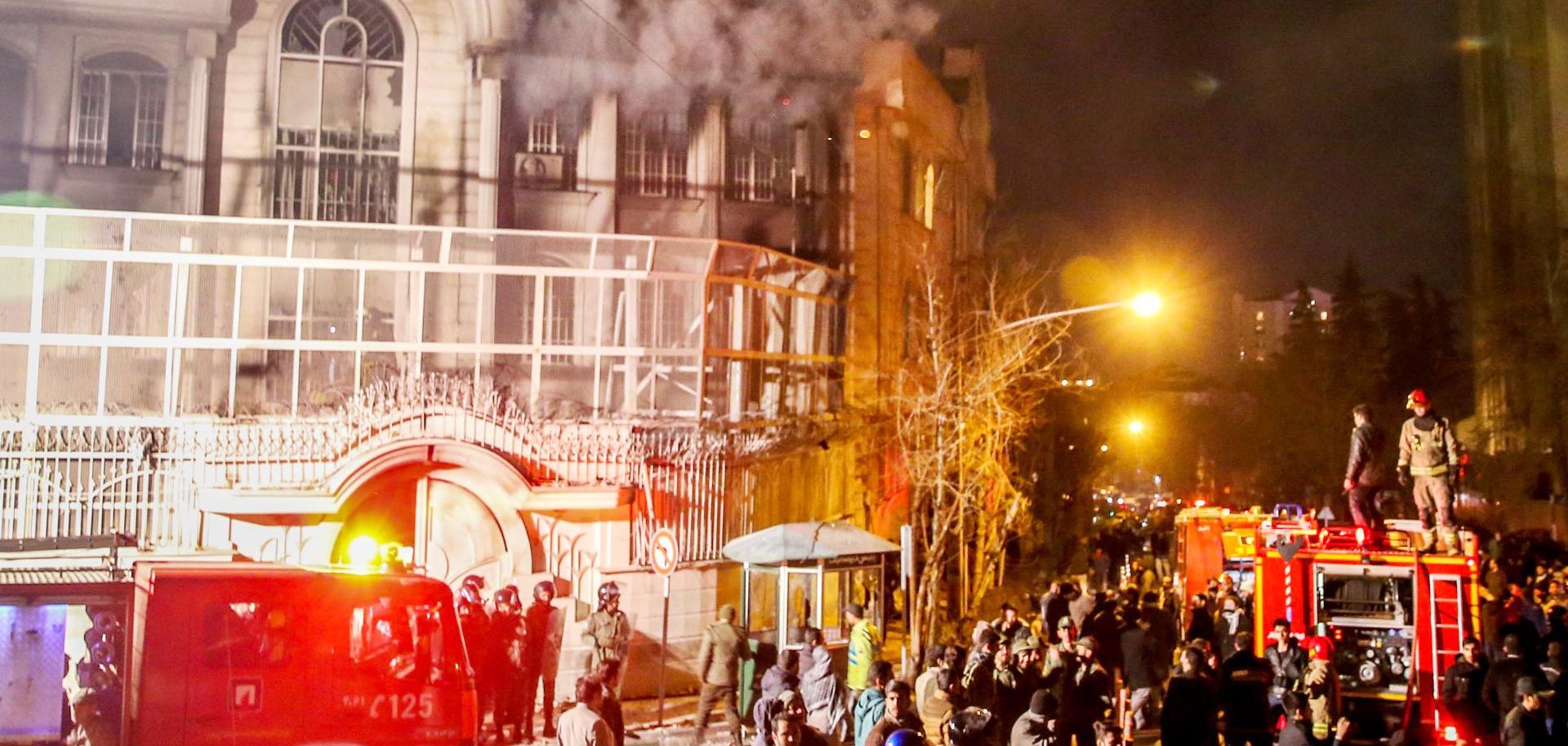ASSESSMENTS
The Attack on the Saudi Embassy Made Easy
Jan 4, 2016 | 18:21 GMT

(MOHAMMADREZA NADIMI/AFP/Getty Images)
Summary
Iranian anger over Saudi Arabia's execution of imprisoned Shiite cleric Sheikh Nimr al-Nimr on Jan. 2 escalated rapidly over the weekend, leading to a breakdown of diplomatic relations between Riyadh and Tehran. The watershed moment occurred when thousands of Iranian protesters stormed and ransacked the Saudi Embassy in Tehran. Saudi personnel wisely were not at the embassy at the time of the incident and, based on the severing of relations announced by the Saudi foreign minister on Jan. 3, they likely will not be in the country for much longer.
Subscribe Now
SubscribeAlready have an account?
